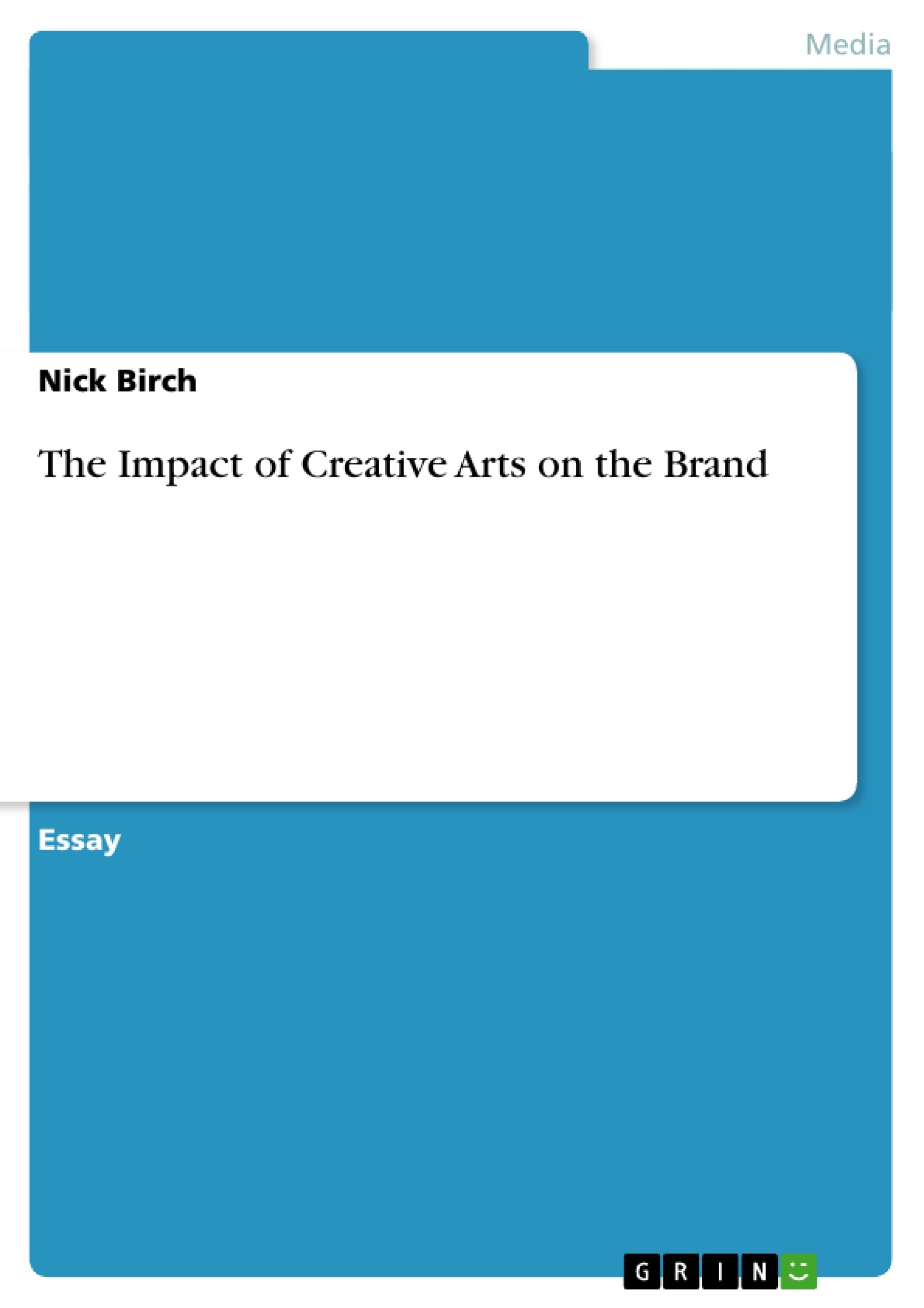Excerpt
THE IMPACT OF CREATIVE ARTS ON THE BRAND
Nick Birch 2011
INTRODUCTION
The American Marketing Association (AMA) defines a brand as a ‘name, term, sign, symbol or design’ intended to identify and differentiate them from competitors (Lake, N/A). Walter Landor, one of the greats of the advertising industry, said “simply put, a brand is a promise. By identifying and authenticating a product or service it delivers a pledge of satisfaction and quality" (Nelson, 2008). Bates (N/A) believes that the best definition is that a ‘ brand is a collection of perceptions in the mind of the consumer’. This definition clearly distinguishes that a brand is very different from a product or service.
A brand is intangible and exists in the mind of the consumer (Bates, N/A).
Social media has turned the ways in which the brand interacts with the customer on its head. With close to 2 billion internet users worldwide, 126 million blogs, 12 billion videos viewed per month in the US alone, (Thomas, 2009), 2 billion tweets on Twitter per month and 500 million people on Facebook (Van Grove, 2010), the face of the consumer may remain essentially the same but the way in which they interact with brands has changed dramatically.
It seems brands are now impacted by the creative arts, the ones more specifically known as social media sites, blogging and user-content creation leading to direct consumer participation in the modification of brand identity. The creative arts and technology have allowed the consumer to have their say heard by an audience, to rapidly share information and empowered brand-users to gain control over how a brand is perceived, their reputation, product quality control and even direction. Amidst the impact of these creative arts, brands now ignore their customers at their peril.
MILLENNIALS – A NEW CONSUMER
Abbildung in dieser Leseprobe nicht enthalten
http://www.millennialsconference.com/ny/
The latest generation entering our workforce, our audiences and our customer-base are in ‘huge numbers that dwarf the size of the older [Generation] X group [and are] critical to the future of our arts organisations’ (Steuer, 2010). Dubbing them Millennials, writer and consultant Patricia Martin has just released a new study called Tipping the Culture: How Engaging Millennials Will Change Things in December 2010.
Tipping the Culture is a report on ways that global brands are reaching Millennials, who are commonly considered as being between the ages of 15 and 31 and proclaimed in the study as ‘the future’ (Martin, 2010, p.1). As future consumers, the study outlines that Millennials are reshaping how they are engaged by brands and researches ways that successful brands are making themselves relevant to these young cultural consumers (Martin, 2010, p.1).
Martin (2010, p.3, 4 & 6) offers three key insights:
1. The brand is no longer at the centre of the universe - the user is.
2. Have something meaningful to say.
3. Help them belong to the brand.
Martin herself comments on the article Who Are the Millennials, Why Do We Need Them, and How Do We Engage Them? concerning her study, on the Arts, Culture and Creative Economy website (Steuer, 2010). She says:
The thing that is uniquely challenging about this issue is that to engage Millennials is not a question of "spin" - of choosing the right lists, designing the brochure the right way, pitching stories to the right media. It is in fact about changing the user experience, changing the relationship. What's exciting about this challenge is that it ushers in a time of humanity in marketing that has been absent heretofore’.
(Martin, 2010).
The study may not be radically new, however it reiterates already established phenomena and provides fresh insight into how some corporations have been successfully discovering and implementing effective strategies in reaching Millennials. In order to do so, brands must essentially relinquish themselves to their customers. ‘They need to own it and shape it. This is really exciting and also really scary for marketers used to obsessively controlling the integrity of their brand’ (Steuer, 2010).
The tipping of culture is in fact about change - changing the user experience, the brand’s relationship to their consumers and about changing the creative arts themselves. These ideas may cause alarm among the sceptical and reluctant brands, but as Steuer (2010) forewarns; ‘putting your head in the sand and doing things the same old way seems a formula for slow, steady demise.’ He also stresses the importance of using the term “engaging” [which] may replace the term “Marketing”, because if there is one thing this generation hates it is being "marketed to”.
Tipping the Culture also examines corporate examples that ‘have successfully been able to build sales and brands that resonate with this generation’ (Steuer, 2010). ‘Keeping up with the content demands of self-expression - blogging, tweeting, and maintaining fresh content on Facebook walls-—makes this generation hungry for content they can reuse. They need fodder for the Facebook pages and tweets (Martin, 2010)’. Millennials respond to emotionally-intense content and ‘brands that understand this increase their emotional appeal’ (Martin, 2010, p.4). ‘Virality, word-of-mouth, peer-to-peer credibility, and deeper emotional bonds with the customer’ (Martin, 2010, p.13) are some of the net gains successful Millennial-engaging brands may expect, whereas their customers may profit from ‘[a]uthenticity, humanity, and knowledge they can share socially with others’ (Martin, 2010, p.13).
[...]
- Quote paper
- Nick Birch (Author), 2011, The Impact of Creative Arts on the Brand, Munich, GRIN Verlag, https://www.grin.com/document/269676
Publish now - it's free






















Comments